Last updated on April 30, 2024

Analyze the Pollen | Illustration by Anna Christenson
Collecting evidence is a necessary activity for investigators of murders and crime scenes. Naturally, in a MTG set that revolves around solving mysteries like Murders at Karlov Manor, there’s much evidence to be collected by characters like Alquist Proft, Master Sleuth. Collect evidence is how this flavor converts into card actions and game mechanics.
MTG frequently uses the graveyard as fuel for your strategies, with delve as a notable example. Other cards require you to exile a card or a creature card as an additional cost. Collect evidence is a little different, in a way that’s both powerful and balanced, and in a way that makes the player rethink how to interact with graveyards and game decisions. Today we’re taking a look at the rules and best new cards behind the collect evidence mechanic from MKM.
How Does Collect Evidence Work?
Collect Evidence X is a keyword action that works as an additional cost for spells and abilities. To Collect Evidence X, you must exile any number of cards from your graveyard with total mana value X or greater, and you’ll do that to obtain a certain benefit or to get around a restriction. If you want to Collect Evidence 4, you can exile a card with mana value 4 or greater from your graveyard, or two cards with mana value 2, and so on.
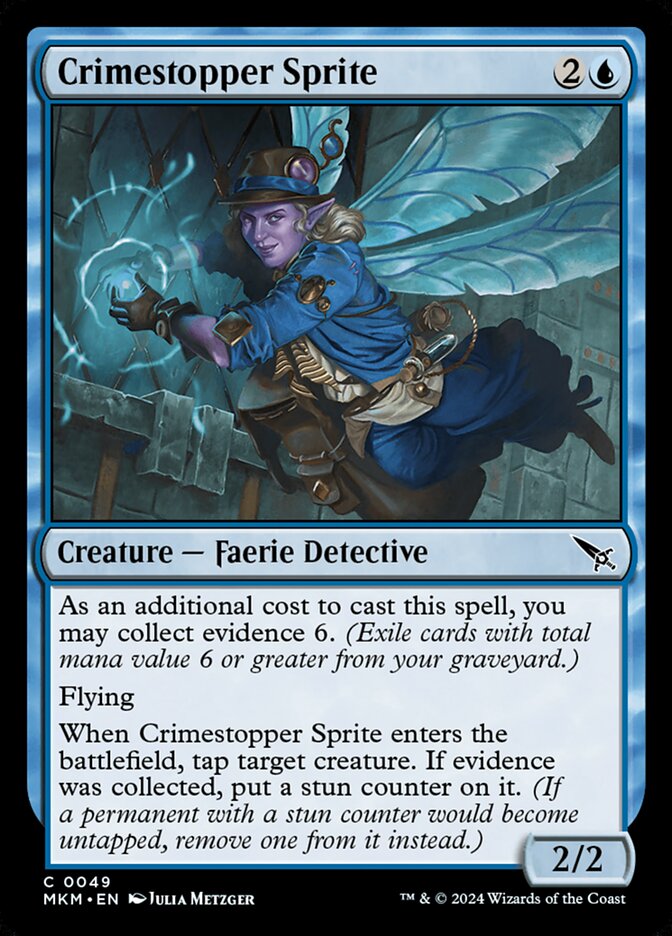
Many cards with this mechanic state that you may collect evidence as an additional cost to cast the spell, as with Crimestopper Sprite. In this case you’ll get a more powerful version of the spell, the same way it happens with the mechanic bargain from Wilds of Eldraine.
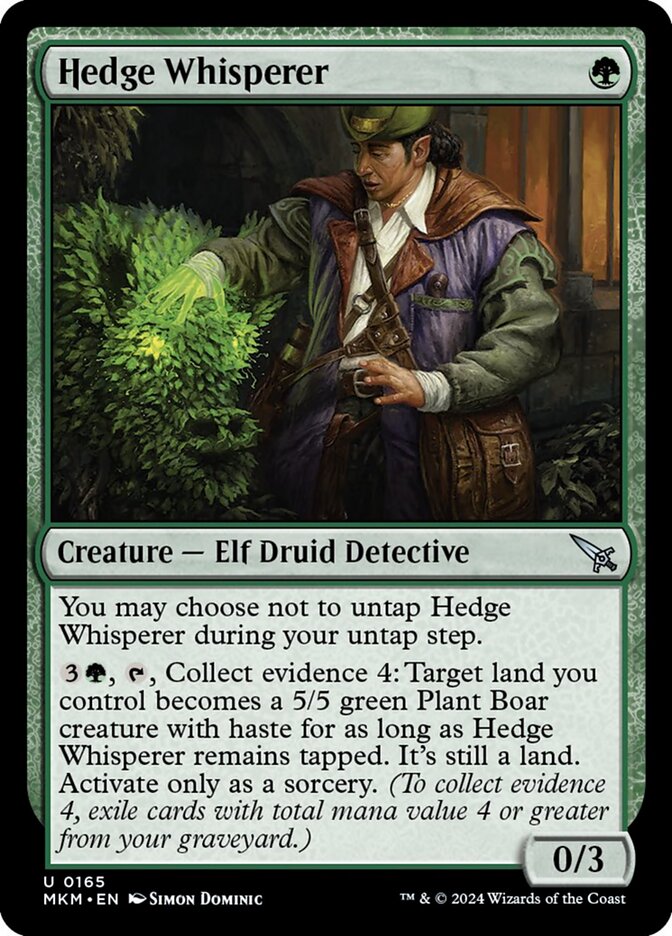
Other cards like Hedge Whisperer will ask you to collect evidence while it’s already in play, and in this case, collect evidence is a part of the Whisperer’s activated ability.
The History of Collect Evidence in MTG
Collect evidence first appeared in Murders at Karlov Manor (MKM) in 2024, in a few designs spread across all colors, but much more prominent in Sultai colors. There are 22 cards with collect evidence in MKM and one card in Ravnica: Clue Edition.
Most Collect Evidence X designs have an X value of around 3-6. MTG’s Lead Designer Mark Rosewater said that they were looking for a mechanic that made you accumulate resources to solve a particular case or mystery. A graveyard mechanic made a lot of sense, because cards accumulate in your graveyard, and detectives frequently have to dig up evidence, which resonates even further.
Is Collect Evidence a Triggered Ability?
Collect evidence isn't a triggered ability and can’t be responded to. Collect evidence is mostly used as an additional cost, so you exile the required cards and the action doesn’t go to the stack.
In the case of something like Axebane Ferox, collect evidence is used as part of the ward trigger, but if you respond to this trigger, you’re responding to ward, not collect evidence.
Is Collect Evidence an Activated Ability
Collect evidence is not an activated ability. Cards like Forensic Researcher, however, require you to collect evidence in order to activate an ability,. In this case, collect evidence is a cost, and not the ability itself.
Is Collect Evidence an Additional Cost?
Yes, collect evidence is an additional cost. You will collect evidence as an additional cost to pay in a variety of contexts. Like the kicker mechanic, it isn’t mandatory, but you’ll get a reward if you pay the additional cost.
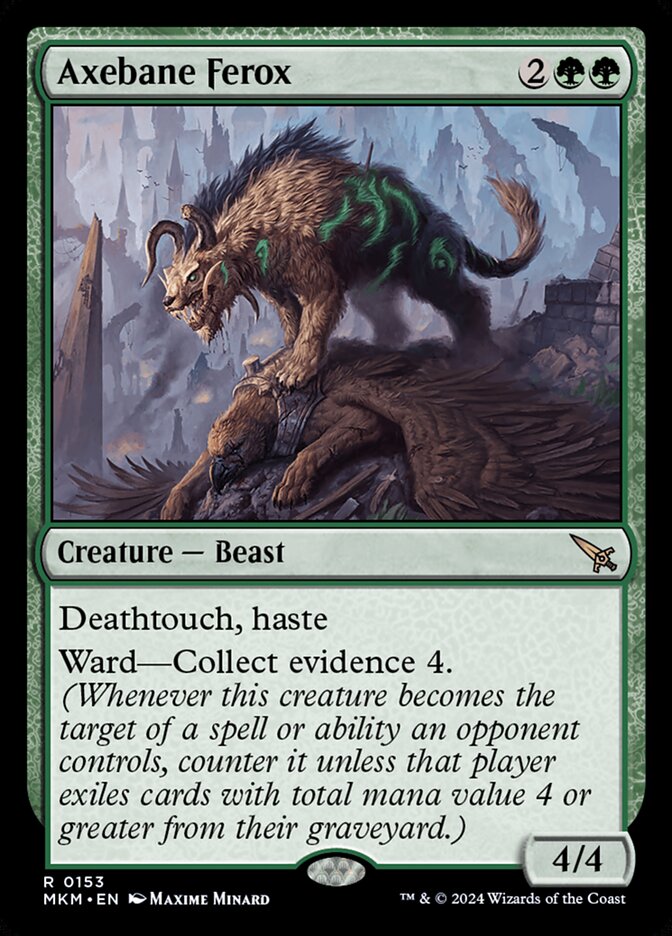
Some cards, like Axebane Ferox, have collect dvidence as a cost required to pay for its ward ability, but in this case, the opponents will need to collect the evidence, not you.
Can You Exile a Graveyard in Response to Collect Evidence?
This depends on the card. In cases where collect evidence is an additional cost, you can’t exile a graveyard in response. Additional costs like sacrificing creatures, exiling cards from a graveyard, or discarding cards can’t be responded to. Exiling that player’s graveyard will prevent them from collecting further evidence in that turn or in later turns. It can be done preemptively, if you think that collecting evidence will be integral to your opponent’s long-term strategy.
However, some cards collect evidence as part of the resolution of a spell or ability. For example, Sample Collector can collect evidence when it attacks. This isn’t an additional cost to activate the ability, so an opponent could exile your graveyard in response. If they do, you won’t have anything left to exile when Collector’s ability resolves. Similarly, ward uses the stack, so if your opponent doesn’t have a graveyard by the time Axebane Ferox’s ward ability resolves, they can’t collect evidence, and whatever they used to target Ferox will be countered.
Collect Evidence vs. Kicker
Both mechanics are similar in the way that you can pay an additional cost to get a benefit. Kicker will let you pay the additional cost only when you cast the spell, and this can be done by paying additional costs like mana, paying life, or discarding cards. Collect evidence, however, only works by exiling cards from your graveyard. Also, you don’t always need to collect evidence when you’re casting the spell, you can collect evidence later as an additional cost to use some abilities.
Gallery and List of Collect Evidence Cards
- Tenth District Hero
- Behind the Mask
- Conspiracy Unraveler
- Crimestopper Sprite
- Forensic Researcher
- Surveillance Monitor
- Deadly Cover-Up
- Extract a Confession
- Polygraph Orb
- Incinerator of the Guilty
- Lamplight Phoenix
- Analyze the Pollen
- Axebane Ferox
- Bite Down on Crime
- Hedge Whisperer
- Sample Collector
- Vitu-Ghazi Inspector
- Memory Vampire
- Kylox's Voltstrider
- Izoni, Center of the Web
- Urgent Necropsy
- Evidence Examiner
- Cryptex
Best Collect Evidence Cards
#8. Kylox's Voltstrider

Kylox's Voltstrider is already a good vehicle, with good stats and a low crew cost. However, it can become a creature by collecting evidence, which will catch many people off guard. The fact that you can collect evidence, turn the Voltstrider into a vehicle, attack and cast the exiled spells in the same turn is an interesting prospect, I’m just curious if Collect Evidence 6 is doable or not. Note: You still have to pay the costs of the spell you cast with this effect.
#7. Conspiracy Unraveler
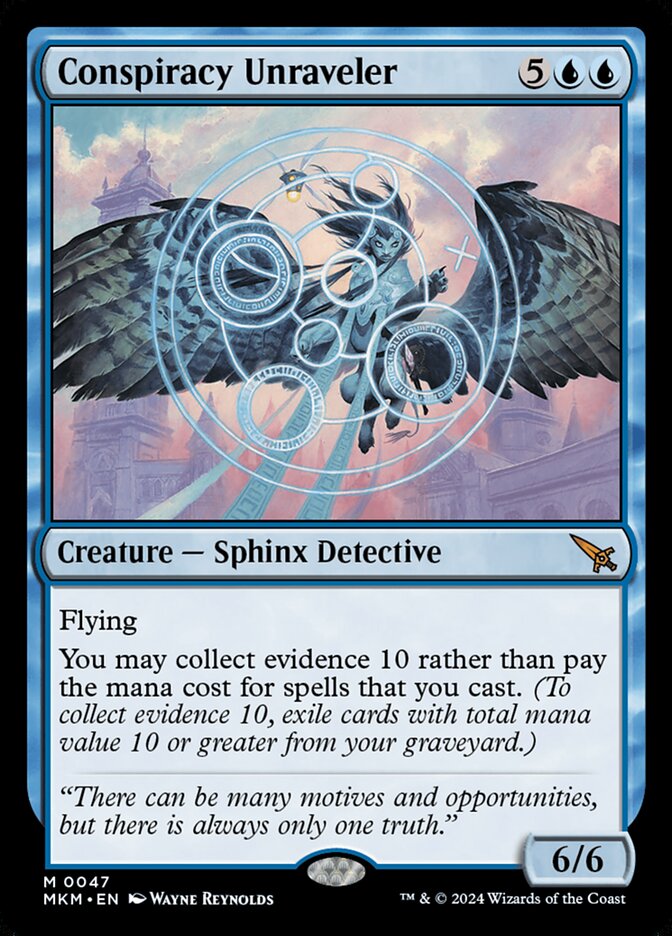
Conspiracy Unraveler is a mythic flyer that offers you an alternative to delve. By collecting evidence 10, you can play a spell from your hand for free. What’s more, high mana value spells like Dig Through Time or Temporal Trespass, willfeed your next free spell. It’s fragile as a 7-drop with no protection, but if you can play it and cast a free spell right after, you’re already way ahead.
#6. Incinerator of the Guilty
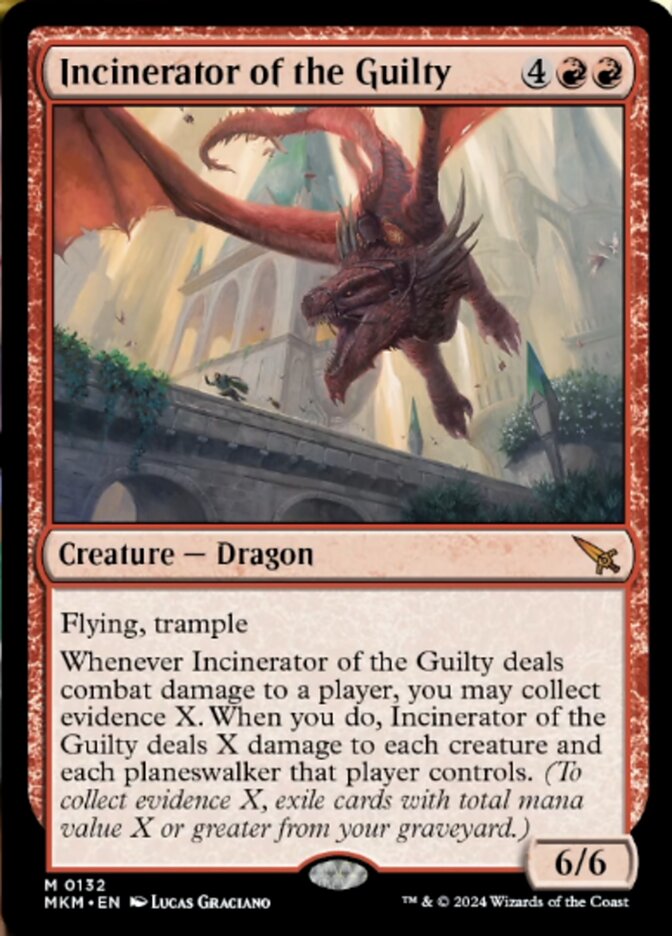
A big mythic rare dragon usually sees play, though the lack of natural haste hurts. Incinerator of the Guilty is interesting, packing a punch with the sweeper tied to the collect evidence ability. I’d at least add the Incinerator to EDH decks interested in a big red dragon, and maybe a Standard ramp deck that could reliably give this dragon haste.
#5. Izoni, Center of the Web
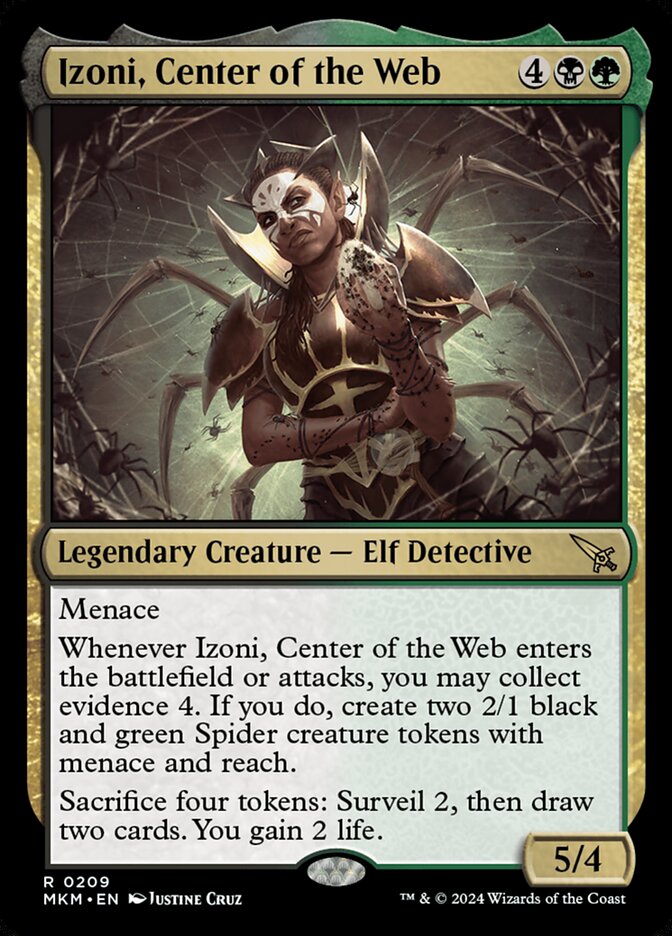
Izoni, Center of the Web is an exciting midrange threat. Very similar to cards like Lolth, Spider Queen and Ishkanah, Grafwidow, the card has the potential to produce multiple bodies, acting both as a stabilizer and a finisher later on.
#4. Axebane Ferox

Axebane Ferox is a 4/4 haste and deathtouch creature, similar to Questing Beast, but with some protection in the form of the ward ability. It’s not trivial to target this card, and control decks with lots of cheap answers in their graveyard will have an even harder time. It’s an effective threat, with good chances of seeing main deck Standard play in stompy decks or sideboard play.
#3. Urgent Necropsy
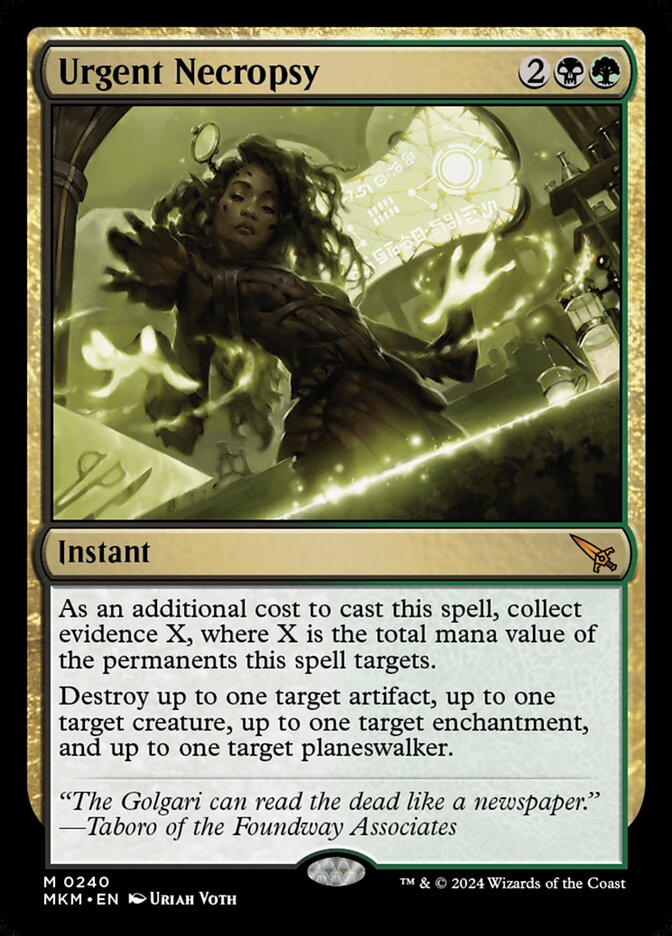
Albeit conditional, an instant speed, potential four-for-one cannot be dismissed. Urgent Necropsy will be a blank when you have no cards in the graveyard, but it’ll be a house in the late game. This is that kind of card that you start playing one-of in your decks, add another one, and later you’ll brew a master crazy turbo self-mill deck to maximize the card.
#2. Deadly Cover-Up

Deadly Cover-Up is a MV 5 black board wipe with additional upside. This is the kind of card that opens up new deck possibilities, like , or mono black control, and at least in EDH can be a budget substitute for cards like Damnation.
#1. Analyze the Pollen
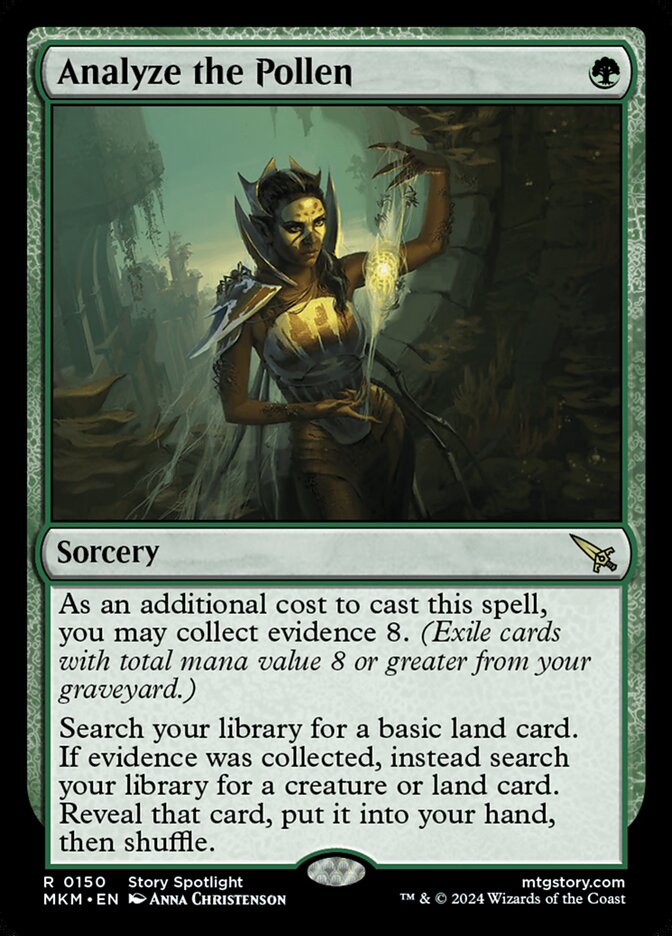
Analyze the Pollen is at worst a Lay of the Land or Bushwhack, which replaces a land in your deck. Cards like Traverse the Ulvenwald or Dig Up see play in lots of formats, so Analyze the Pollen can get there too. Here we’re trading the delirium mechanic for Collect Evidence 8, so the graveyard is still important. In the right deck, it can be online potentially sooner than Traverse the Ulvenwald, making this the better card for the job. And in x EDH decks you’ll have an effective creature tutor for longer games.
Case Closed
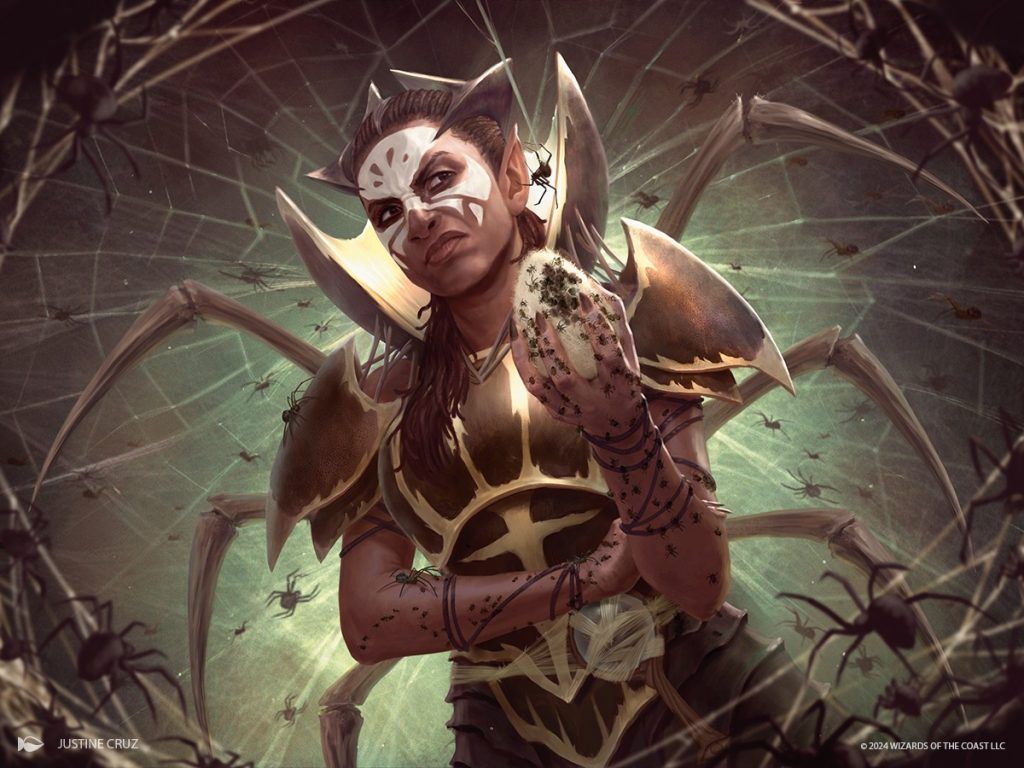
Izoni, Center of the Web | Illustration by Justine Cruz
Collect evidence is one of the major mechanics in Murders at Karlov Manor, and it’s really not an add on here, as it ties thematically and mechanically to the set. Much effort has been put into the cards to ensure that they’re good or playable even without the mechanic, but they excel and overperform in a fair way if you’re able to pay the extra cost.
As collect evidence requires cards in your graveyard with high mana cost, it has many synergies with self-mill and reanimation strategies. If you have ways to draw cards and discard, you’ll have to weigh the benefit of casting a more expensive spell later on, or discarding it now to be able to collect evidence in the same turn. In Limited I’ll be collecting as much evidence as I can.
What do you think of this new mechanic? Any important cards didn’t make the list? Let me know in the comments section below, or interact with us in the Draftsim Discord.
Thanks for reading guys, and stay safe out there.
Follow Draftsim for awesome articles and set updates: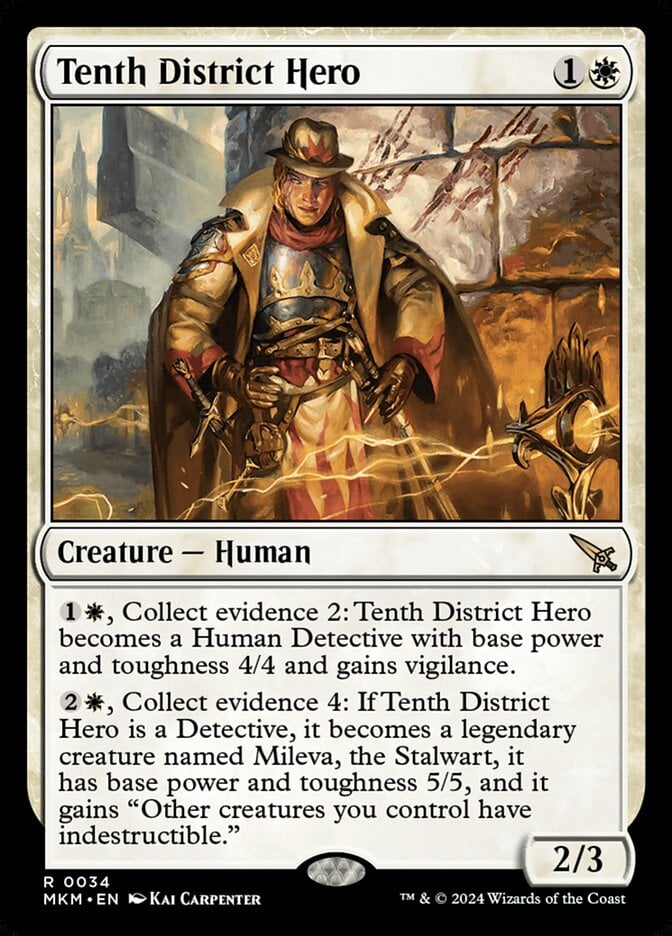
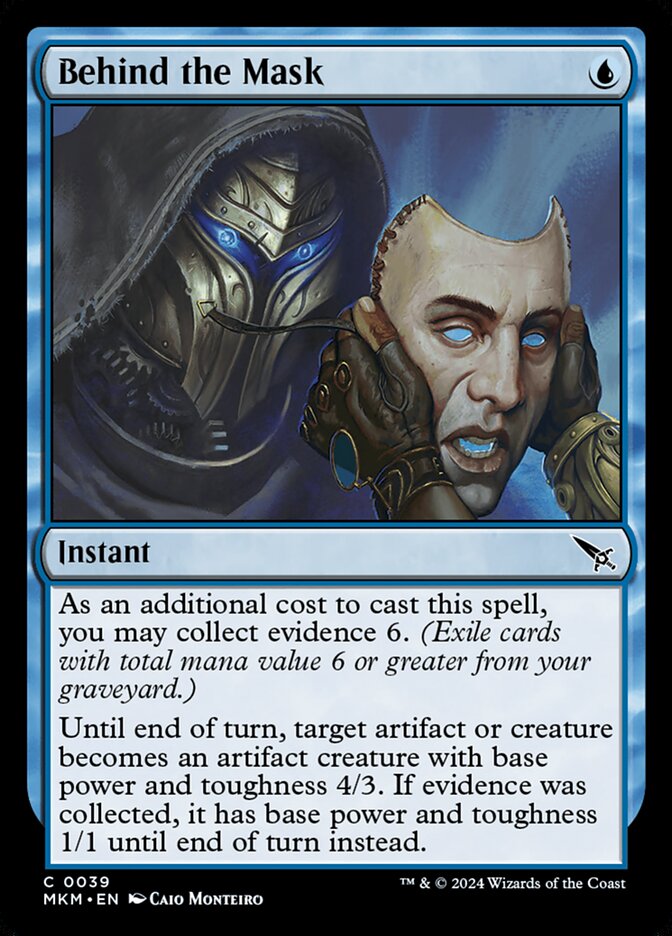
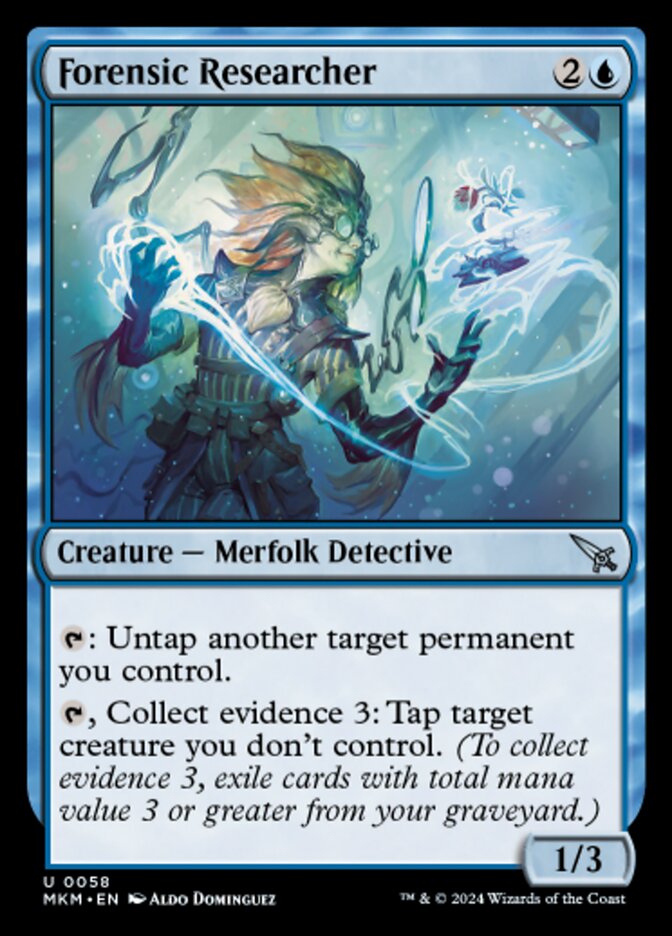

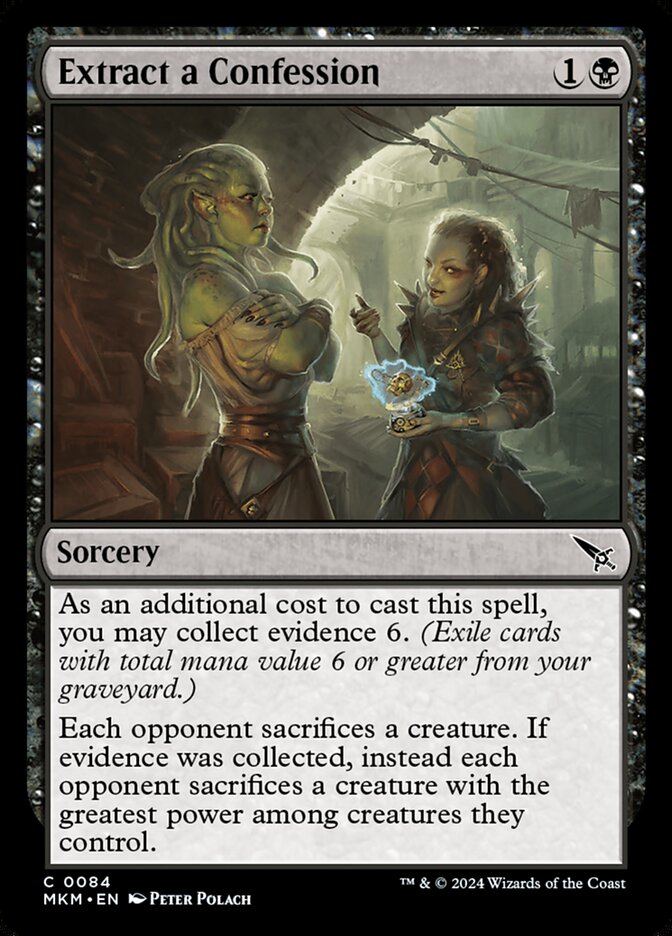

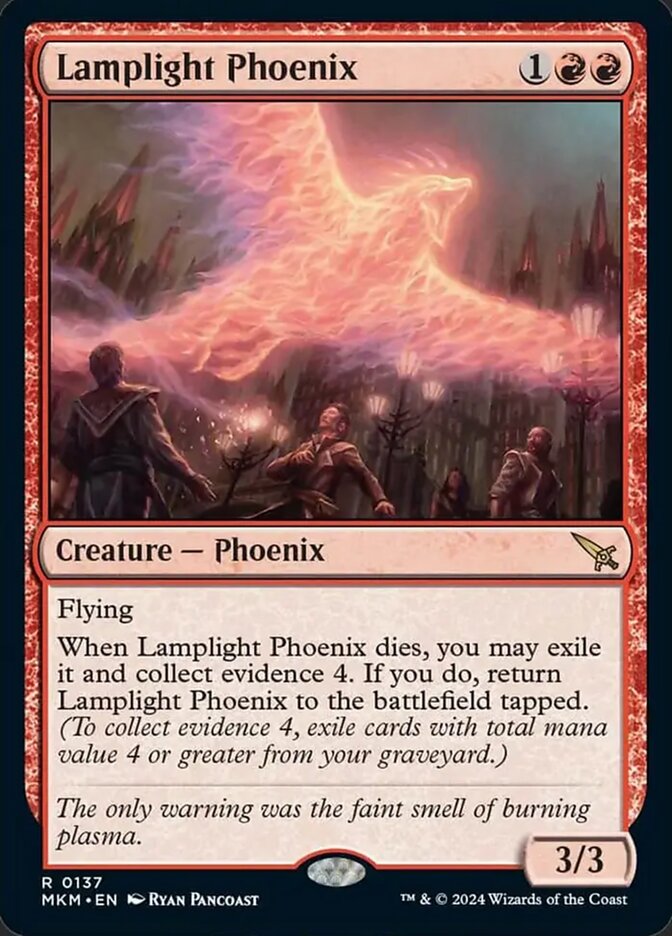

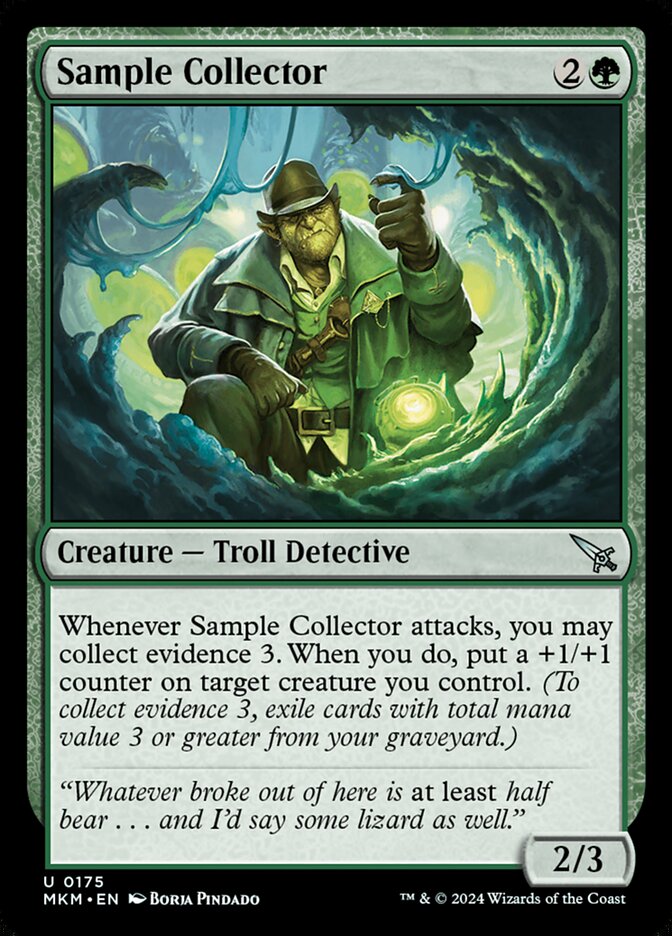
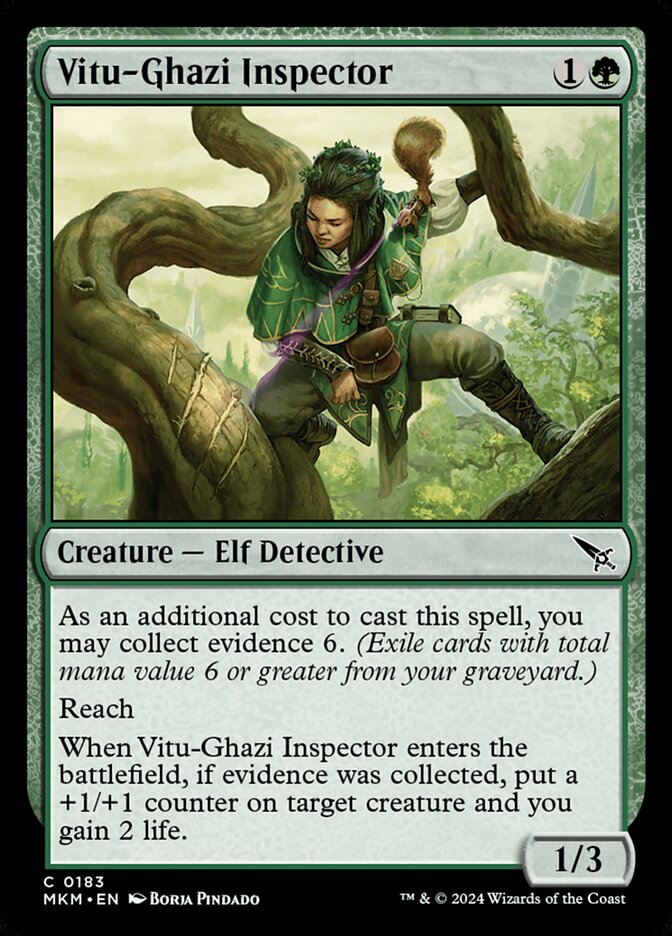
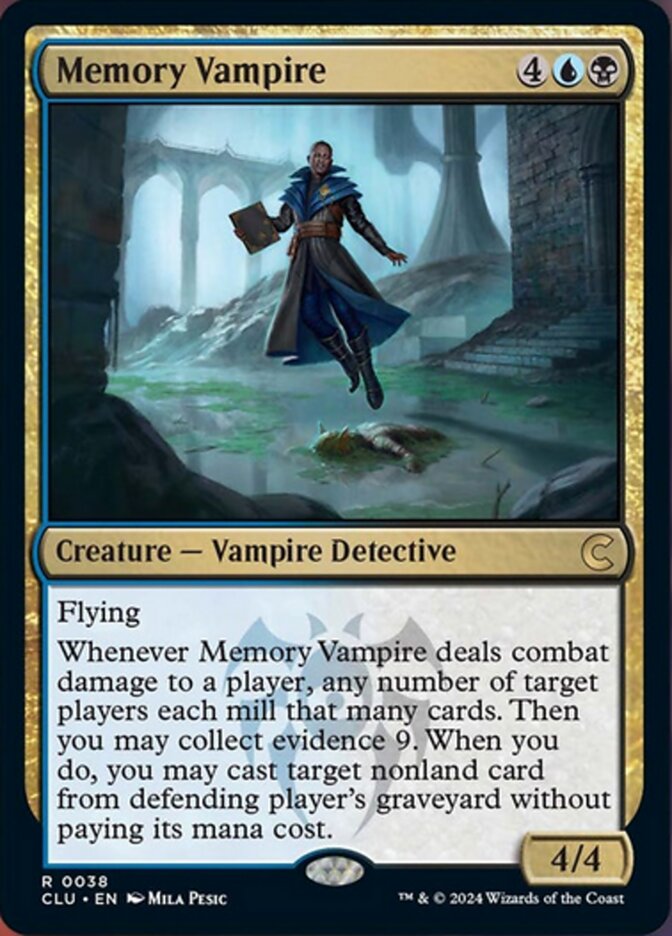
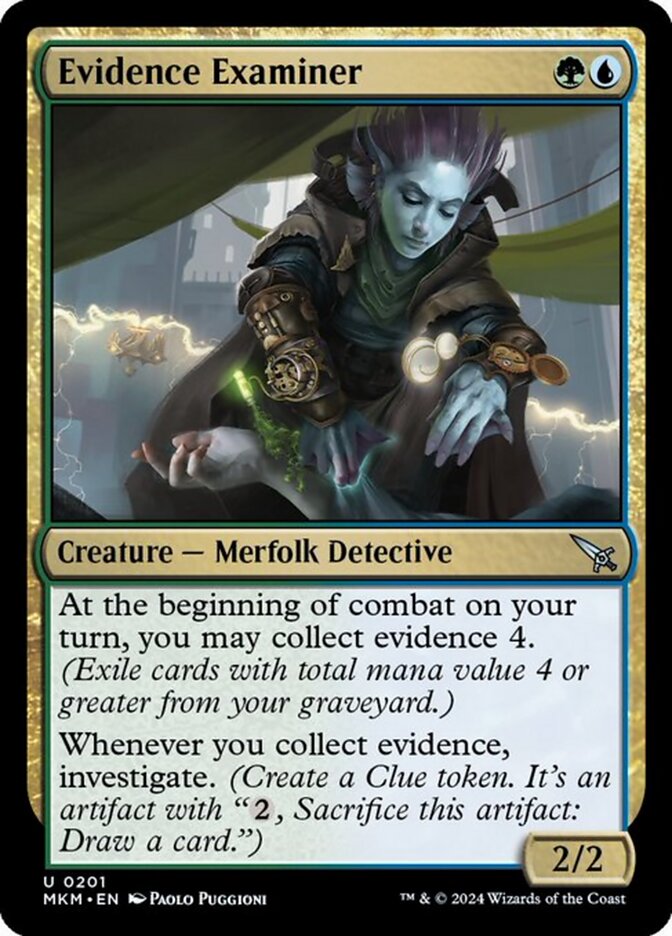
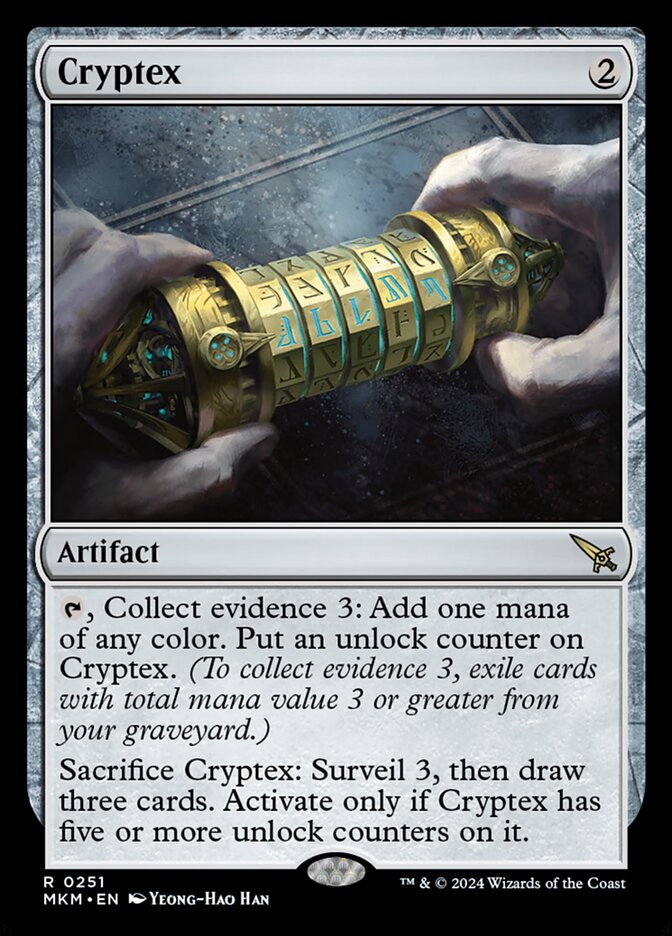


Add Comment